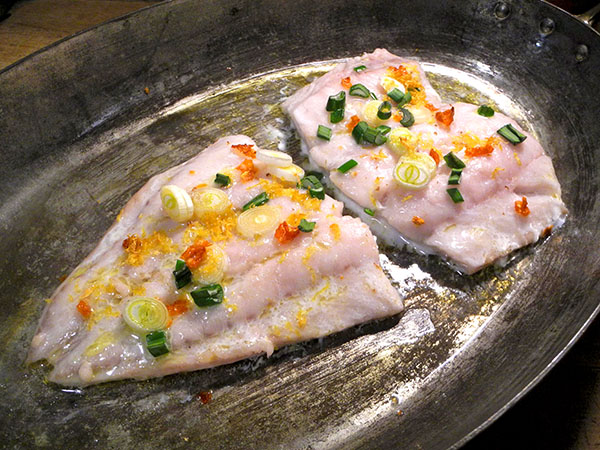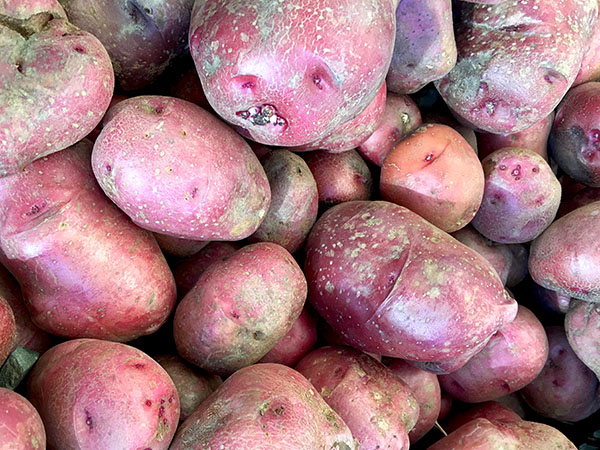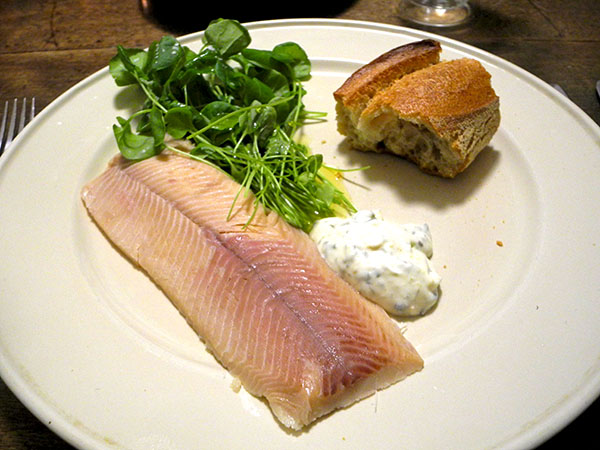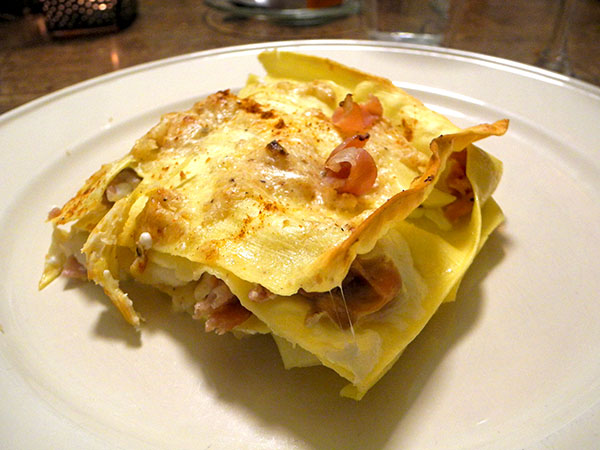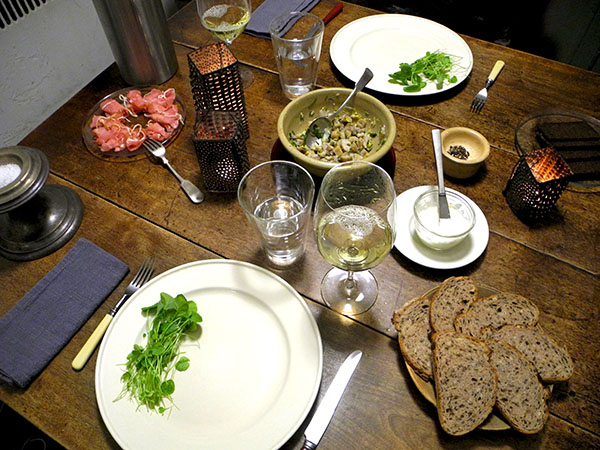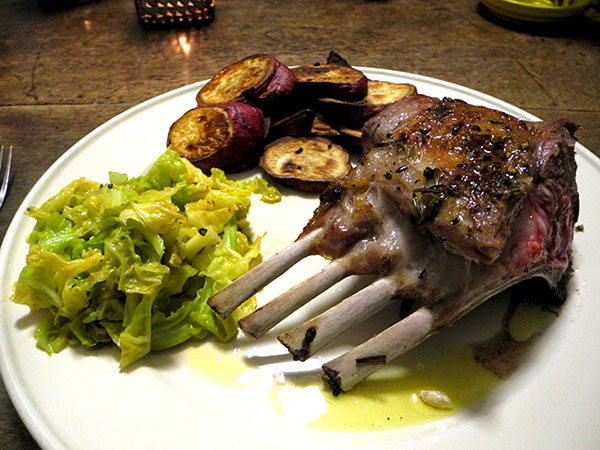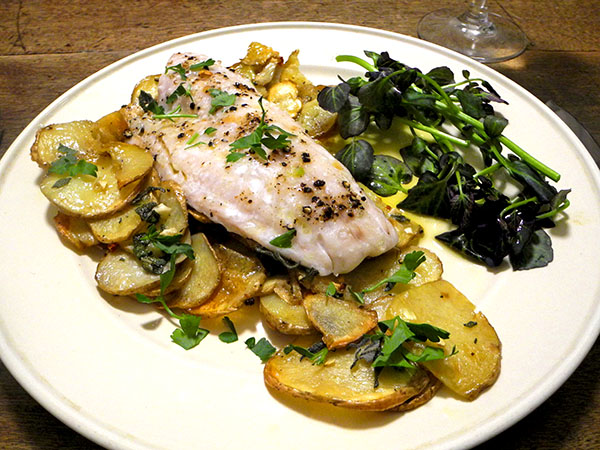
I’ve cooked the noble Atlantic tilefish a number of times, usually following this Melissa Clark recipe, but on Friday I decided to go a very different route. I began with Mark Bittman’s general outline for preparing most any white fish fillets roasted with potatoes, but didn’t stop there.
There were potatoes.

The entire meal, except for the fresh watercress, was cooked inside one glazed terra cotta oven pan.

- one pound of Carola potatoes from Dave Harris’s Max Creek Hatchery in the Union Square Greenmarket, sliced about 1/4″ thick, tossed with 3 tablespoons of olive oil, salt, and pepper, arranged overlapping inside a glazed ceramic pan and roasted in a 425º oven for 10 minutes, the pan then turned around and left for an additional 10 minutes, or until the potatoes had begun to turn brown (perhaps even a bit beyond that point), removed from the oven and scattered with one tablespoon of chopped fresh sage from Eataly, one teaspoon (or more) of minced garlic from Healthway Farms & CSA, and a bit of some home-dried golden habanada, after which two 7.5-ounce tilefish fillets [Lopholatilus Chamaeleonticeps, aka Great Northern Tilefish, Golden Tilefish, etc.] from Pure Vida Seafood, seasoned with salt and pepper, were placed on the top top of the potatoes, the fish drizzled with 2 tablespoons of olive oil, and placed inside the oven until cooked through (10 minutes, or a little more), removed to the plates, garnished with the pan juices and a little chopped parsley from Eataly
- a bit of baby red watercress from Windfall Farms, dressed with a good Campania olive oil (Campania D.O.P. Penisola Sorrentina ‘Syrenum’)
- The wine was a California (grapes from the Sacramento River Delta with a small amount of Viognier from Lodi) white, Miriam Alexandra Chenin Blanc California 2016, by Alexandra Farber, from Naked Wines
- the music was Mozart’s 1781 opera, ‘Idomeneo’, René Jacobs conducting the Freiburger Barockorchester
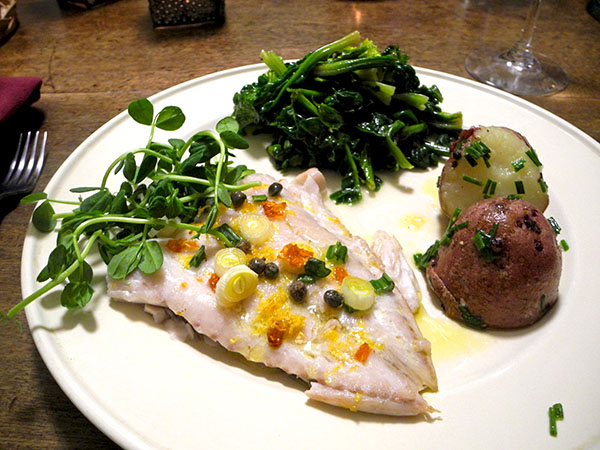 I’ve always described pollock as a wonderful fish, and this time, more than ever before, on Wednesday it looked as lovely as it tasted.
I’ve always described pollock as a wonderful fish, and this time, more than ever before, on Wednesday it looked as lovely as it tasted.